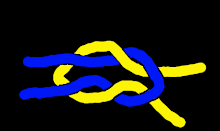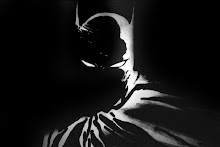2010-08-22
2010-08-12
Take THAT, Kevin Smith
 I have nothing to say about this except that you might find Let's Be Friends Again a funny webcomic.
I have nothing to say about this except that you might find Let's Be Friends Again a funny webcomic.
2010-08-01
Under the Red Hood
 The only bit of review worth doing I think is to disagree with them about is Bruce Greenwood. We all know Kevin Conroy is great. But I think Greenwood did a superb job. Although I have admit it wasn't this actor who convinced me that Batman didn't need to be played by Conroy: It was William Baldwin's version from "Justice League: Crisis on Two Earths". Man, was he amazing.
The only bit of review worth doing I think is to disagree with them about is Bruce Greenwood. We all know Kevin Conroy is great. But I think Greenwood did a superb job. Although I have admit it wasn't this actor who convinced me that Batman didn't need to be played by Conroy: It was William Baldwin's version from "Justice League: Crisis on Two Earths". Man, was he amazing.The other thing worth noting is that while the bulk of the movie maybe good but not brilliant, the climax scene is simply outstanding.
2010-07-30
Becoming Batman
...OK so it's on YouTube not TV.
...OK so it's not about me but it is about someone becoming Batman... Just like me.
And it does mirror my life exactly.
...OK maybe not exactly... maybe...
Just watch it, already!

2010-07-27
Triathlon
One September 19th I'll run a triathlon to demonstrate to myself that this summer's physical training should be considered a success.
I always thought triathlons were longer but I'll be
Swimming 500 m
Cycling 26 km
Running 5 km
This makes it a "sprint"-triathlon. I'd rather try an "olympic"-triathlon of
Swimming 1.5 km
Cycling 40 km
Running 10 km
but this Triathlon doesn't have that as an option.

2010-07-19
A blog after my own heart
 Now that's what I'm talking about! Remember when I used to do superhero-related Fermi Problems? Well check out this out: there's this blog called Polite Dissent and last month he asked a Fermi problem: Could Superman cure cance?
Now that's what I'm talking about! Remember when I used to do superhero-related Fermi Problems? Well check out this out: there's this blog called Polite Dissent and last month he asked a Fermi problem: Could Superman cure cance?I loved the post and I'm sure you will too.
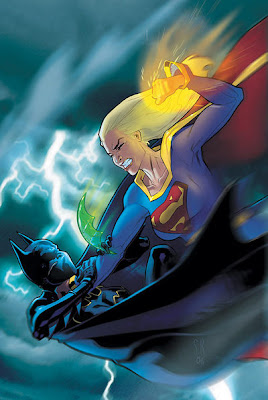
2010-07-12
Oh bother
I shimmied-up a couple of floors between two buildings with a narrow alley between them and made it to the roof. But not without some trouble, mind you. The problem? My shoes for sure. I decided that the best footwear would be my old wrestling shoes. I thought that my wall climbing shoes wouldn't be good because I couldn't walk to the site I choice for my virgin climb. Plus in climbing shoes I couldn't run off or jump down if I needed to. So I chose my wrestling shoes as the next best thing since they are close-fitting like climbing shoes. Not a good choice.
The soles are all wrong. Climbing shoes are smooth but rubbery. Wrestling shoes are smooth but nearly as soft. Any time I took pressure off my hands, my feet would slip. Not fun. With all that slipping you'd better believe that I wasn't silent as a ninja. Not a chance.
I think even runners would have been a better choice. If you have any ideas about better footwear leave a comment because I don't have a clue.

2010-07-08
Bat-radia
 If there is one thing that is often missing from the commonly shown contents of Batman's utility belt:
If there is one thing that is often missing from the commonly shown contents of Batman's utility belt:A simple police scanner!
Now I suppose in the high-techie sort of portrail of Batman there is probably a nano-scanner or some such thing built in his mantel. And of course, he is often shown with a high-tech communications system for communicating with his allies.
But a low scale, independent Batman doesn't need those things. What he needs is a handheld scanner radio. In fact, there's a pretty good argument why Batman would go low-tech for this kind of thing: If it's just a reciever and not an emitter no one should be able to track him. Scanners are completely passive.
So what is a scanner radio? A scanner is a radio receiver that scans multiple frequencies looking for transmitions.
The idea is simple but some of the details can get confusing unless they are explained chronologically rather than as they come up. Back in the 1930s people like the police would broadcast through AM radio stations so that anyone with a radio could hear. In order to have their own channel, they would change to a less public frequency. Of course, then and now anybody could just follow them and keep listening as long as they could tune into that channel. Each channel required a specific quartz-crystal which so that your radio could tune in. So the crystal almost acted like a key.
 It wasn't until the 1970s that programmable scanner radios allowed you to type in any frequency (in the scanner's range) and listen in.
It wasn't until the 1970s that programmable scanner radios allowed you to type in any frequency (in the scanner's range) and listen in.It turned out that some channels tended to get way more traffic than others. Just imagine say an taxi company. Each of the cars maybe has its own car-to-car channel with every other car. Most of the time these aren't being used. But imagine being the dispatcher. Every car is calling the dispatcher all the time! The dispatcher's channel is busy!
So to alleviate this all the frequencies are pooled together and a “site controller” gives each channel to a frequency. Then after a while he rotates them. The scanner radios then automatically follow because hidden in the transmittion you are currently listening to is the next frequency that the channel will be using. This is all called trunking. A trunk tracker scanner radio can follow this automatically.
Of course, today even radio communication of this sort is heavily digital but we won't go there.
For more information you need to check out:
Police Scanner Info
HAM Universe
Radio Scanner Guide
2010-06-29
Batman Training 10,000 Hours per Ability
 In the comments to This War Continues a couple of us have been talking about what it takes to be an expert. I had recently read that it takes three hours per day of training to become an expert.
In the comments to This War Continues a couple of us have been talking about what it takes to be an expert. I had recently read that it takes three hours per day of training to become an expert.Those three hours per day are actually an estimate on the number of hours per day to become an expert in approximately ten years. As mentioned by M.C. Elroy, it's actually based on the 10000-Hours-Rule. The 10000-Hours-Rule is a claim made popular in the book Outliers by Malcom Gladwell (make sure to watch the three videos found on the side bar) that 10,000 hours of delibriate practice are required to become an elite expert at any given thing. The idea itself comes out of the work of Anders Ericsson who did studies of what he called elite performance or expertise.
 Ericsson lists three very broad ingredients that are need to produce an expert:
Ericsson lists three very broad ingredients that are need to produce an expert:1)Measure - Lord Kelvin once said, “If you can not measure it, you can not improve it.”
2) Deliberate Practice - Practice does not make perfect. Repeating what you already know how to do does not help make you an expert. Focused effort to do something you don't do well or can't do at all (called deliberate practice) is the key. 10,000 hours of this and you're on your way.
 3) Finding Coaches and Mentors – The best coaches know skills will need improvement at the next level not just your current level and so can help tremendously to ensure deliberate practice.
3) Finding Coaches and Mentors – The best coaches know skills will need improvement at the next level not just your current level and so can help tremendously to ensure deliberate practice.Batman is currently the 14th most powerful comic character according to ComicVine's Rank Game. He is ranks first in Unarmed Combat, Escape Artist, Tracking, Gadgets and Stealth. Plus he ranks 4th in Weapon Mastery and Marksmanship. According to the 10,000-Hours-Rule, to be an expert in all those requires 70,000 hours or 21 hours per day for 10 years straight of dedicated practice.
2010-06-25
This War Continues
 Eight weeks of boxing courses end tonight. This is the session and then there is a three week break.
Eight weeks of boxing courses end tonight. This is the session and then there is a three week break.All and all, it's been pretty intense. I never imagined that I would be able to skip-rope so well. In fact, if I had to point to the most important improvement to my self-defense skills it would be the vast improvement in balance. Boxers have good balance and I feel that I've picked-up some of that.
The other two major improvements are simply:
(1) practice hitting something solid. In Jui-Jitsu when we point-fight, part of the exercise is having the self-control to never make contact with your opponent. So I've really appreciated the experiance with true contact and how that effects your next move.
(2) endurance. Boxing classes have been exhausting and I'm not exactly out of shape anymore. One of the best results of BuildingBatman is that I've been in the best shape of my life for nearly two years and counting. Since the begin of the summer season I have been rotating running, biking and swimming on top of boxing class. I have loose plans to compete in a TriAthlon this year. We'll see about that but it's all because of this blog.
So there's a three week break and then I repeat the eight week course.
Up next: A review of police scanners.

2010-05-18
This Will Have to Hold You Over

2010-05-10
Boxing Batmen, Batman
It goes as follows:
1) Stretches
2) For 45 min do a circuit consisting of
-skipping
-skipping
-speed bag
-heavy bag
-heavy bag
-speed bag
-skipping
-skipping
-shadow boxing
-heavy bag
-heavy bag
And repeat. You spend 2min at each before moving to the next.
Before finishing, we did something the coach called a punch-out. He broke us into small groups and had go hard on the bags (still focusing on stance but not stepping in and out just continual strikes).
It made for a tough workout.

2010-05-04
And In This Corner... the Batman
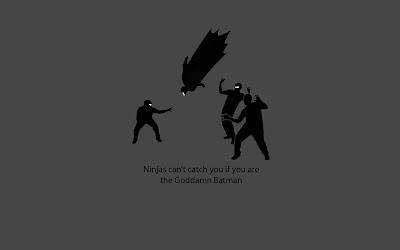 I just got back from my last Jiu Jitsu session of the season. The community dojo that I attend shuts down over most of the summer. All and all, I'd say it was a great experience. I attended a handful of competitions, went to classes weekly and was awarded my orange belt. Although the goal of this blog is to introduce me to (and not master) all the skills and abilities that Bruce Wayne would need before becoming the Batman, I think that I will continue with Jiu Jitsu next fall.
I just got back from my last Jiu Jitsu session of the season. The community dojo that I attend shuts down over most of the summer. All and all, I'd say it was a great experience. I attended a handful of competitions, went to classes weekly and was awarded my orange belt. Although the goal of this blog is to introduce me to (and not master) all the skills and abilities that Bruce Wayne would need before becoming the Batman, I think that I will continue with Jiu Jitsu next fall.In the mean time, starting next Friday I will be attending a local gym for a training course in boxing. I hear that it's pretty intense and I hope to get alot out of it.
 PS Anybody who wants to consider themselves learned about Batman's martial arts training must read the series of posts on the subject over at Comics, Films, Kung Fu, and Whatever the Hell Else:
PS Anybody who wants to consider themselves learned about Batman's martial arts training must read the series of posts on the subject over at Comics, Films, Kung Fu, and Whatever the Hell Else:Intro
Boxing
Jujitsu
Savate
Eskrima, Kali and Arnis
Capoeira
Kung Fu
Wing Chun
Mok Gar
Northern Shaolin
Tien Hsueh
Iron Man I: How It Should Have Ended
2010-05-03
SMBC Theater vs Batman
and they do Superman in the same schtick:
2010-03-20
Eiko Chan
Eiko Chan tumblr
Eiko Chan on deviantART
Eiko Chan on Blogspot









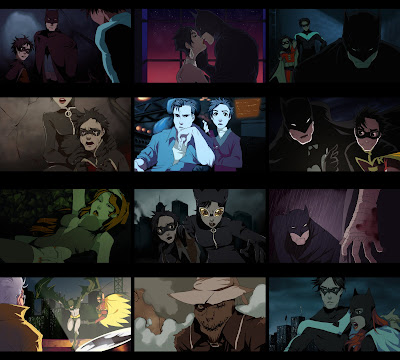



















2010-03-17
My Name's Not Actually Bruce - clever, no?
The rest of the first chapter (after the not so good stuff I mentioned in my last post) is a good discussion of how people’s stereotypes can be useful to disguise artists. Absolutely in separable from this is the idea of context. The concept of context forms an important part of this book: “If your disguise fits a common stereotype that is substantially different from the image you normally project, you are not likely to be recognized later in your ‘real-life’ role,” the book says. It’s a good point.
 The second chapter is about preparation and has as much to do with seeing others and seeing yourself as it does with not letting others see your true self. After second (this one is the last) fake sounding story about ninja practices, the book talks about getting over your own stereotypes and seeing people and remember very specific details. The exercises he suggests throughout this chapter sound very valuable to someone trying to emulate the world’s greatest detective and throughout the next month I am determined to practice some of them. I’ll introduce as they come up in later posts. After practising to see others, the book then says you should apply this to yourself. Identify your own stereotype. Only once you know what kind of person you project to others can you make alterations to that projection.
The second chapter is about preparation and has as much to do with seeing others and seeing yourself as it does with not letting others see your true self. After second (this one is the last) fake sounding story about ninja practices, the book talks about getting over your own stereotypes and seeing people and remember very specific details. The exercises he suggests throughout this chapter sound very valuable to someone trying to emulate the world’s greatest detective and throughout the next month I am determined to practice some of them. I’ll introduce as they come up in later posts. After practising to see others, the book then says you should apply this to yourself. Identify your own stereotype. Only once you know what kind of person you project to others can you make alterations to that projection.Next he talks about disguises. The perfect disguise has 4 properties:
1)It covers up your individual features making you generic
2)The disguise itself is also generic and made of common stuff
3)It’s easy to put on and take off
4)It’s easy to dispose of.
 Beyond those points the main points of this third chapter can be summarized pretty clearly:
Beyond those points the main points of this third chapter can be summarized pretty clearly:The most important things to disguise are your head and face BUT not to obscure your face. People are distrustful of masks and if you do not have a face (remember faces do so much of our unverbal communication) you will draw attention to yourself causing people to actively search your person for other identifiers (which is something you don’t want if you are trying to be disguised). He does have a couple of neat exceptions to this rule. Keeping in mind Batman read this paragraph:
“The second point is that the fear reaction to a cover-up disguise may at times be used to the disguise artist’s advantage. Medieval Japanese samurai armor often included headgear with terrifying iron masks, complete with exaggerated scowls, teeth, and long mustaches. Even when viewed in the calm of a museum, samurai armor is somewhat unsettling. Worn on the battlefield by sword-wielding, screaming horsemen, it threw opposing troops into confusion and disarray. The same principle operates with the simpler cover-ups. Observers typically feel frightened and confused when they perceive themselves threatened by a masked stranger, and this reaction can but the disguise artist some time in which to conclude his operation and get out of the vicinity.”
Now if that doesn’t sound like Bruce Wayne donning a cape and cowl, I don’t know what does.
The author finishes the chapter with a couple quick ideas about temporarily disguising cars and rooms.
 The next chapter is basically about acting. There’s a couple of important points here. Firstly, don’t try to pass yourself off as a member of any group that you are trying to infiltrate. There are just too many details and subtleties to trip you up. Instead be as different as possible and rely on their stereotypes to help your disguise. Secondly, learn to be quiet. It is an amateur mistake to give lots of made-up background. Don’t babble. Shut up. Be confident in your disguise. People don’t generally care about you and if they are asking it is probably just polite and they won’t expect concrete responses so don’t give them concrete response. The book quotes President Coolidge as saying, “If you don’t say anything, you won’t be called upon to repeat it,” and also, “I never got in trouble for anything I didn’t say.” But this has to be done with tact because if you only ask questions and never reveal anything about yourself (i.e. the character you are disguised as) then people will feel like you are interrogating them and grow distrustful. The solution: learn to flimflam. Small talk is super easy, and so is saying words without any meaning. All it takes is a little practice.
The next chapter is basically about acting. There’s a couple of important points here. Firstly, don’t try to pass yourself off as a member of any group that you are trying to infiltrate. There are just too many details and subtleties to trip you up. Instead be as different as possible and rely on their stereotypes to help your disguise. Secondly, learn to be quiet. It is an amateur mistake to give lots of made-up background. Don’t babble. Shut up. Be confident in your disguise. People don’t generally care about you and if they are asking it is probably just polite and they won’t expect concrete responses so don’t give them concrete response. The book quotes President Coolidge as saying, “If you don’t say anything, you won’t be called upon to repeat it,” and also, “I never got in trouble for anything I didn’t say.” But this has to be done with tact because if you only ask questions and never reveal anything about yourself (i.e. the character you are disguised as) then people will feel like you are interrogating them and grow distrustful. The solution: learn to flimflam. Small talk is super easy, and so is saying words without any meaning. All it takes is a little practice.The penultimate chapter deals with makeup. Now I think that it is more than a little dated but you have to remember that the book is written by a man presumably talking to other men about makeup in the early 80s so you’ll have to excuse the fact that he is explicit about everything. To me the important things were 1) NEVER use stage makeup which is a definite common mistake amongst amateur men 2) blemish cover works fairly well to downplay beard shadow 3) with A LOT of work even ridiculous disguises can be pulled off with makeup and good acting. The book does have a section on using makeup to change the shape of your face but I have to reread it.
So that’s the book in a nutshell (it turned into a lengthy synopsis, oh well). Over the next little while, I’ll implement a practice routine for some of the exercises the book recommended and tell you how they go.
2010-03-16
Disguise Technigues by Edmond MacInaugh
It seems like forever ago that I last posted. What have I been doing for a week?
 Reading up on disguise techniques, that’s what. Since my last post I’ve read through a short book called “Disguise Techniques-Fool All of the People Some of the Time” by Ed MacInaugh. It’s actually a great book and I would recommend it to anyone with even a passing interest in disguises. I was really worried for awhile that I wouldn’t find useful information on the topic but this book was a great introduction and I’d like to recap it for you.
Reading up on disguise techniques, that’s what. Since my last post I’ve read through a short book called “Disguise Techniques-Fool All of the People Some of the Time” by Ed MacInaugh. It’s actually a great book and I would recommend it to anyone with even a passing interest in disguises. I was really worried for awhile that I wouldn’t find useful information on the topic but this book was a great introduction and I’d like to recap it for you.
The book is made up of 5 chapters and a conclusion. The first chapter talks about the psychology needed to become invisible, the second chapter (definitely my favorite chapter) preps you for taking up a disguise, the third talks about disguises, the fourth about acting and the fifth about makeup. Please I beg you, if you ever pickup this book, make it through the terrible Introduction and the start of the first chapter. The Introduction centers around a useless cartoon picture about stereotypes and the first chapter starts off with a bunch of hokey sounding stuff like “Not-being is a state of mind. It could be described as the antithesis of ‘be here now.’ You have probably practiced not being…” But it does get better (after the terribly painful paragraph about Ninja training and an intuitive sense of scrutiny).
Tomorrow I'll post a synopsis of the chapters.






